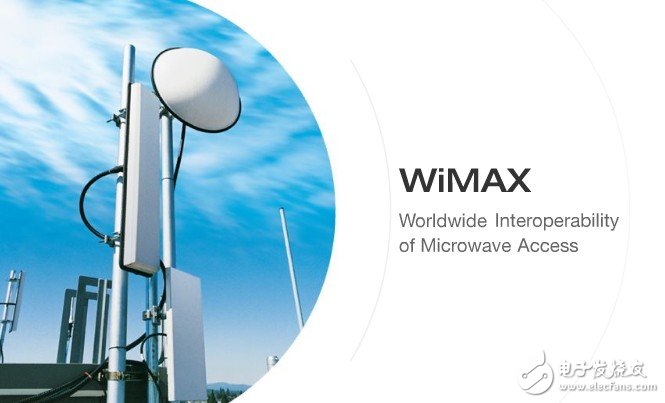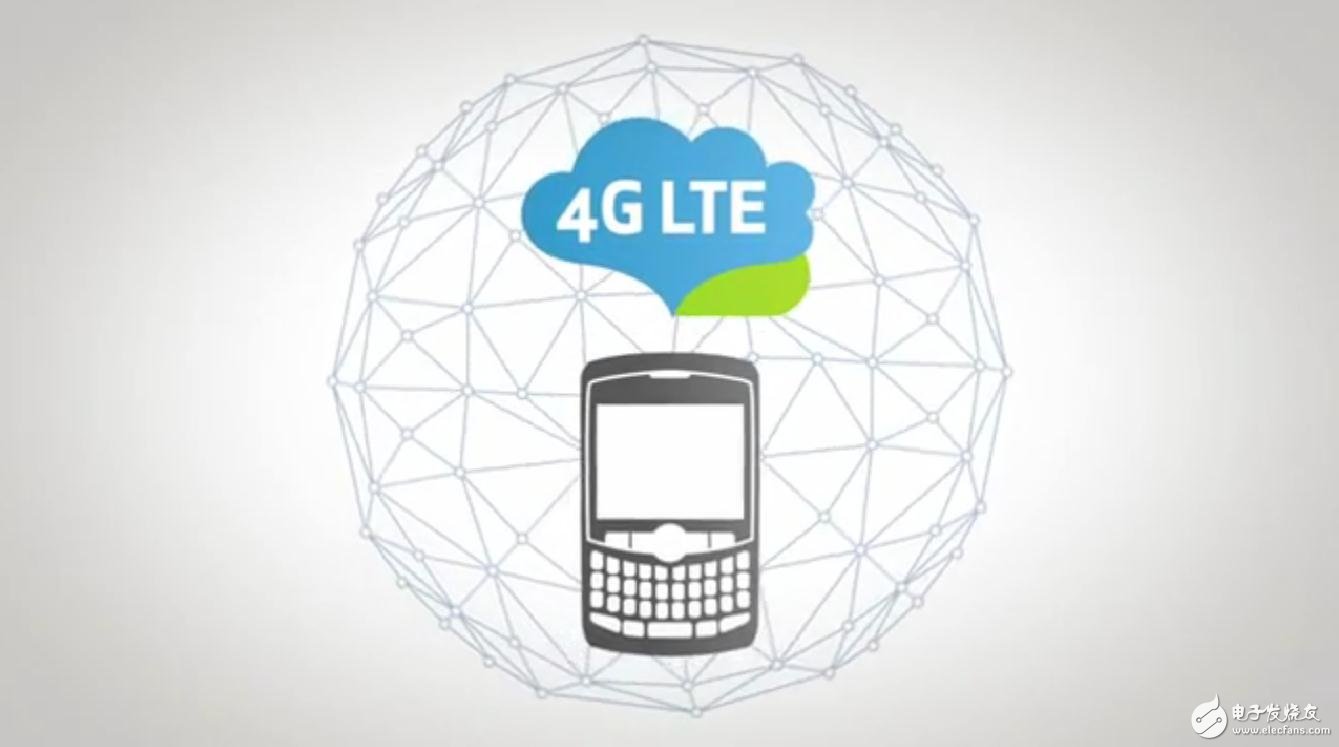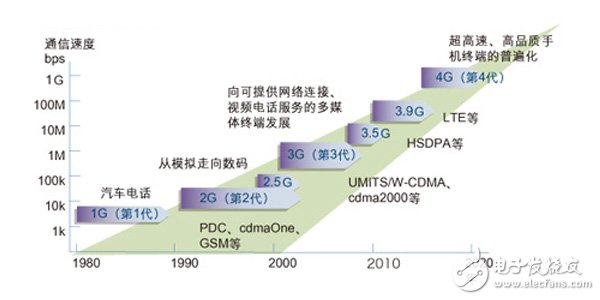With the rise of smart devices, the number of people downloading content is unprecedentedly huge, which puts a lot of pressure on the network. Global wireless operators therefore face increasing demand for high-speed mobile broadband services. More and more users tend to consume bandwidth-intensive applications, such as video applications, and operators have to find new technologies to lead these growing demands.
When operators try their best to offload data traffic, 4G technology starts to shine ...
1. What is 4G?
What is 4G? If it is introduced in a simple sentence: this is actually relative to 3G, the most popular is the fourth generation mobile communication technology, which can provide broadband services for high-speed mobile networks. High speed is indeed the biggest feature of 4G. Taking the LTE standard as an example, its theoretical download speed is about 100MB / sec, which is about 2,000 times that of dial-up Internet access. At this speed, it takes only 6 seconds to download a 600MB file. However, in practical applications, all bandwidth is affected by the transmission distance and the number of simultaneous online users. At present, ITU's basic technical requirements for 4G are to reach a rate of 100 megabits / second in the mobile state and 1 Gbit / s in the static and slow-moving state. Compared with the existing mobile communication technology, the transmission speed of 4G can be increased by 1000 times. As the saying goes, get the standard, and get the world! Therefore, after the emergence of 4G technology, the standard battle has become the focus of major technology manufacturers.
Second, the unhappy WIMAX standard
The previous mainstream mobile communication standards were all proposed by the communication industry, mainly by telecom operators, like some telecom equipment vendors, Huawei, ZTE, Ericsson, which are well known to us. However, due to data communication in the 3G era, computer manufacturers also began to try to put forward some of their own mobile communication technology standards in the 3G era. WIMAX was created in this situation, and WIMAX ’s main support in this regard The latter includes Intel, a traditional manufacturer of computer chips, and because it is developed from a wireless local area network, high rate transmission rate is its biggest feature.

WiMAX is a wireless broadband technology defined by the IEEE802.16 standard. The earliest IEEE802.16 standard was released in December 2001. Since then, multiple revisions and new versions have been released in succession. However, it is the last version that really makes WiMAX a world-famous technology. This is IEEE 802.16-2005 (802.16e ). Based on IEEE802.16e, 802.16-2005 can provide switching and roaming, so that WiMAX can provide mobile applications, so it is also considered by the industry as an accelerator for the development of personal mobile broadband. The three key technologies SOFDMA, MIMO and AAS enable WiMAX to further improve the main performances such as speed, throughput and capacity. These key performances allow operators to provide services with high bandwidth requirements and QoS requirements to end users, such as Streaming media, VoIP, video conferencing, interactive games, etc.
At the beginning, the development of WiMAX is not bad, and it also has a place in the market. However, the future of the technology has been controversial since its introduction. Its weakness is proposed by computer manufacturers, so there is a lack of ready-made examples in network deployment, and the operator's network deployment is a very complicated matter. For example, LTE network evolved from the original 3G network relatively smoothly. The assumption of the network is that there are quite a lot of experience and there are quite a few mature examples. And the carrier network is so complicated that there are quite a few ready-made examples in which to continuously develop and improve. Therefore, after Intel, the main support company of WIMAX, disbanded the office of WIMAX in 2010, WIMAX basically lost the opportunity to become a mainstream international standard. In this way, LTE has become the only mainstream standard in the 4G era.
3. The LTE standard in the limelight
LTE is the abbreviation of "Long Term EvoluTIon" in English. In fact, it is not difficult to understand from the English name. LTE is quite different from the current mainstream 3G technology. It can be understood as an exploration and attempt of the International Telecommunication Union for the future mobile communication system. . Since it is an attempt, there must be a corresponding template. The earliest proposed LTE evolution strategy was 3GPP, which defined LTE as derived from the GSM / UMTS wireless communication technology. Because we often say that CDMA2000, WCDMA, LTE, etc. are all air interface standards, the evolution path of LTE should be GSM-WCDMA-HSD / UPA-LTE.

According to the working mode, LTE can be divided into FDD-LTE, which is a natural evolution of WCDMA; in addition, China's TDSCDM has evolved into TD-LTE, and the two standards are included in one LTE standard. The main difference between the two is that TD-LTE is time division multiplexing and FDD-LTE is frequency division multiplexing. For example, TD-LTE is like an early single-track railway. Trains in both directions share a section of rail, and only one train can pass at a time. In TD-LTE, the mobile base station and the terminal are similar. The base station sends data to the terminal in a certain period of time, and the terminal sends data to the base station in another period of time. FDD-LTE is different. The transmission and reception use different frequency bands, which can be performed at the same time. Just like the double-track railway we see now, two-way trains go on their respective tracks without affecting each other.
This seems to be a better FDD method, which is currently used in GSM and WCDMA. But in the LTE era, TDD does have two advantages. First, FDD needs to allocate bidirectional frequency bands for upstream and downstream services, and a certain interval between the two frequency bands is needed to avoid interference. Now that 2G and 3G have occupied some frequency bands, the difficulty of allocating two-way frequency bands for LTE will increase a lot. TD-LTE does not have this limitation, and can use some frequency bands to allocate the remaining "trimmings". Another advantage is that in the era of voice services, the upstream and downstream voice traffic is symmetrical, and the FDD method allocates the same bandwidth for upstream and downstream, which is more appropriate. However, the development of mobile Internet will change this traffic model. Downstream traffic will be more than upstream traffic. Time-division multiplexing can adapt to this change by allocating different durations to upstream and downstream, but FDD cannot. Therefore, TD-LTE is widely optimistic about the international industry chain in the era of mobile Internet where frequency bands are scarce. The reason why these two standards belong to one LTE standard is because these two technologies have a high degree of commonality. The public technology reaches more than 90%, which can be easily compatible, and the two can achieve seamless interoperability.
Further reading: Mobile communication technology development process

The development of mobile communications from 1G to 4G has gone through the stages of strengthening and upgrading GPRS, EDGE, HSDPA and other data services. In this process, it has also undergone many improvements and evolutions, and its market application prospects are not immediately obvious. from. It is believed that with the launch of 4G technology, the application of mobile internet will gradually become mature and rich.
4. 4G has entered our world
Maybe you still think that the 4G era is still far away from us! Then you are wrong. China's 3G technology started late, but in terms of 4G it has maintained almost the same enthusiasm and progress as foreign countries. Among them, China Mobile's TD-LTE is the most active. As early as last year, China Mobile started 4G trial commercialization in Hangzhou, Shanghai, Guangzhou, Shenzhen and other cities. China Mobile stated that according to the actual measurement of Guangzhou and Shenzhen, the current maximum download speed of TD-LTE exceeds 80Mbps, which is about 10 times that of 3G network. For example, the transmission network adopted by CCTV for the live report of the Spring Car Transportation is the 4G network. China Mobile said it hopes to build 350,000 to 400,000 TD-LTE base stations nationwide in 2013.
Of course, it is the improvement and maturity of the industrial chain that determines the commercialization of 4G. One of the signs is the maturity of 4G terminals. At present, all LTE chip manufacturers have or will support TD-LTE and FDD LTE common baseband chips, but the market positioning of different manufacturers is different, and the chip implementation architecture for standard protocols is different. Therefore, the process of achieving LTE multi-mode fusion and The progress is different. At present, the main challenge for baseband chip manufacturers to support multimode is to support TD-SCDMA mode. Compared with the support of the TD-SCDMA chip industry, the TD-LTE chip industry chain is stronger, including traditional TD-SCDMA chip manufacturers, traditional FDD LTE chip manufacturers, traditional WiMAX manufacturers and domestic emerging chip manufacturers, but with TD -SCDMA R & D experience companies have a limited share of the entire TD-LTE chip industry chain. In addition, for this fast-arriving 4G era, mobile phone equipment manufacturers are also well established. At this year ’s MWC2013, China Mobile ’s booth showed several TD-LTE mobile phones. Suppliers included Samsung Electronics, LG Electronics, ZTE, and Huawei. The TD Alliance booth showed Huawei, Sharp, HTC, and Content Electronics. TD-LTE mobile phones provided by more than ten companies. Even more exciting, China Mobile has launched the supply of three TD-LTE mobile phones in February this year, and the total terminal purchase volume of TD-LTE will exceed 1 million this year.
However, from the perspective of the promotion of 4G standards, we need to wait patiently to fully enjoy the 4G network-although China's 4G license has not been officially issued. During the delegation's discussion during the two sessions, Miao Wei, Minister of Industry and Information Technology, revealed that 4G licenses are expected to be issued this year. This is the first time that the Ministry of Industry and Information Technology has made clear the issuance of 4G licenses. As for the type of license that operators can obtain? There is no clear conclusion yet. China Mobile has begun to do TD-LTE scale trials, and obtaining TD-LTE licenses is almost an iron nail. China Unicom's 3G license is a WCDMA license and can smoothly evolve to FDD-LTE. Obtaining the FDD-LTE license is the best arrangement. The only uncertainty is China Telecom. It is worth mentioning that in the new spectrum planning program announced in China, all the 190MHz frequency resources in the 2.6GHz band have been given to TD-LTE, which means that the future TD-LTE spectrum will be as high as 190MHz, so many spectrum resources Obviously not exclusive to an operator of China Mobile. Therefore, China Telecom is likely to obtain a TD-LTE license. But it is undeniable that when the decision-making layer selected mobile to develop 4G, a more important consideration is: use 4G to start to further optimize the competitive landscape of the telecommunications market. In this sense, the launch of 4G should not only be a matter of the three major operators, but also involves many factors such as the radio and television sector, private capital entering the telecommunications industry and so on. And 2013 will be a crucial year for 4G license decision.
Write at the end:
The vast majority of people on this planet have not yet figured out what 3G is all about, and 4G has arrived. I wonder if you are ready for the new 4G "Pocket Internet" era?
Football Pump Needle,Soccer Ball Air Pump,Soccer Air Pump,Deflated Soccer Ball With Pump
SHENZHEN SMARTNEWO TECHNOLOGY CO,. LTD , https://www.newopump.com